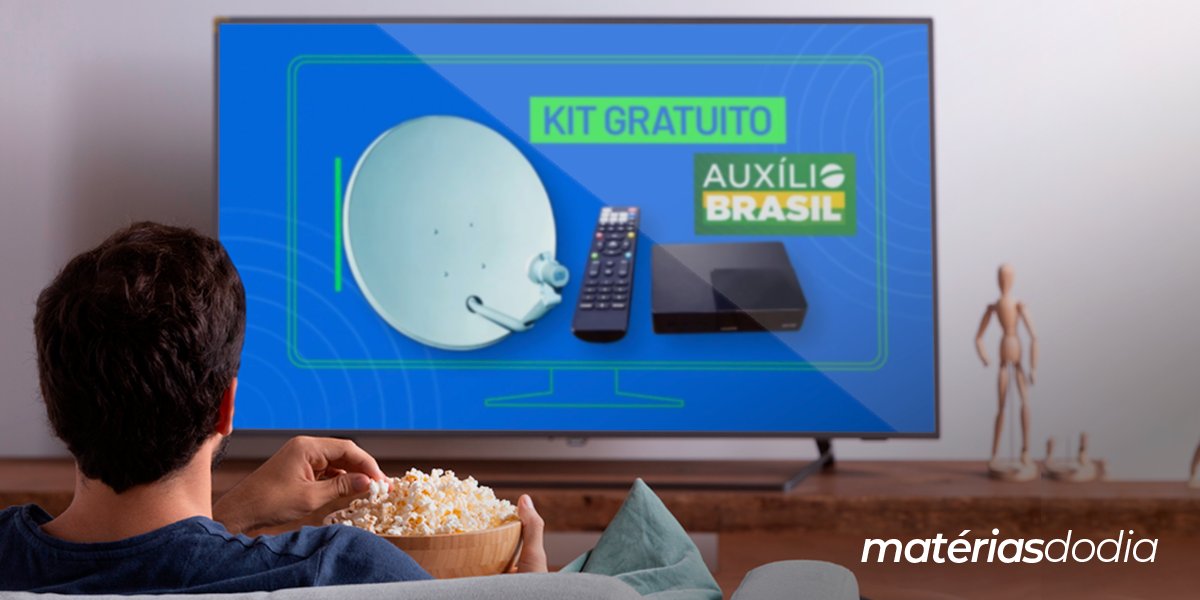Those who still use traditional satellite dishes (C band) risk completely losing the signal from open channels. Furthermore, by 2026 the government intends to switch off the satellite signal, leaving only the digital signal.
The digital antenna kit is provided by the government and contains all the necessary equipment. The provision of this equipment aims to ensure digital inclusion and it is estimated that around 1.5 million people will benefit from the antennas.
If you still use traditional antennas and don't want to miss out on your favorite programs, continue reading to find out how to get the kits.
Benefits of digital TV
Improved image and sound quality
The distribution of these kits offers several benefits to low-income families, ensuring that they have access to quality television at no additional cost. With digital TV, users can notice a significant improvement in sound and image quality compared to analog signals.
Another point that should be taken into consideration is the variety of free channels, in addition, the digital signal has less interference caused by weather conditions, tall buildings or other physical obstacles, providing a more stable and reliable reception.
Access to social programs and free kits
The release of free digital antenna kits is part of a government initiative to promote inclusion and ensure that the population can benefit from the improvements brought about by the transition of the TV signal from analogue to digital.
To be able to purchase the kit, you must be registered with CadÚnico, a social program that allows the government to identify low-income families. If registered, you will automatically be considered eligible to receive the kit.
Antenna types and installation
Digital satellite dish
The satellite dish receives signals via satellite. At the top of the dish is a device called LNB (Low Noise Block-Down converter), which is responsible for converting the received signals and then sending them via cables to the satellite receiver inside the home.
The installation process consists of the following steps:
- Choose the installation location (this location must allow the antenna to be securely fixed);
- Mount the antenna dish and install the LNB;
- Find the satellite (if the previous steps are performed correctly, from now on your antenna will start transmitting signals to your TV);
- Make adjustments to the direction of the antenna if you notice difficulty in capturing signals;
- Finally, search for channels on your TV and make the final adjustments.
Remember that the installation must be carried out by a specialist so that you obtain the best results at the end of the installation.
Internal and external antennas
Indoor antennas are very small and are generally designed to be placed indoors, on top of furniture or attached to the wall.
Installing an indoor antenna is simple and requires no special tools. Simply connect the antenna to your TV or receiver via a cable. The position of the antenna may need to be adjusted to optimize signal reception, simply move it closer to the window or simply adjust its orientation.
As for external antennas, they were developed to be installed outdoors and fixed to more robust structures, such as satellite dishes. Their installation consists of:
- Choose the location for fixing;
- Mount the antenna;
- Direct the antenna to capture signals.
- Connect the cables to the TV and make any final adjustments necessary.
Factors influencing reception
Some of the factors that interfere with signal reception are physical obstacles, such as trees and buildings; electromagnetic interference that can generate noise; the weather; height and positioning of the antenna, etc.
These are some of the factors that can influence the quality of the signals transmitted to your TV. It is recommended that you perform manual searches and, if the problem persists, contact a professional to check.
Customer Support and Service
When purchasing a digital antenna kit, it is important to know that there are customer service channels available to clarify any doubts and schedule services. In addition, it is also possible to find specialized stores that offer installation and maintenance services.
Below, we have separated some contact information for you. See:
Service and scheduling channels
Siga Antenado is one of the main ways to get in touch to schedule the installation of your digital antenna kit. If you want to know if you are eligible for the kit or want to request the installation, it is important to have your CPF and NIS (Social Identification Number) number on hand when you get in touch.
If you wish, you can access the website of Stay Tuned and fill in all the information requested when filling out the form, including the date and time of installation. You can also contact the call center by calling 0800 729 2404; remember that this number is also a WhatsApp number.
Conclusion
The delivery of digital antenna kits is a federal government initiative that aims to provide low-income families with the opportunity to watch their favorite programs with better sound and audio quality.
If you wish to receive it, you must be registered with CadÚnico and have a monthly income of up to 3 minimum wages, live in a city with more than 500 thousand inhabitants and have a traditional satellite dish installed and in operation.
Families that have an external digital antenna of the “fishbone” type or an internal digital antenna do not need to make the change. The same goes for those who have pay TV, whose signal is transmitted by cable and is not affected.




